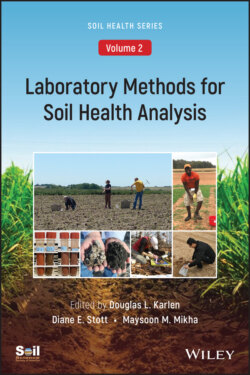Читать книгу Laboratory Methods for Soil Health Analysis, Volume 2 - Группа авторов - Страница 21
Soil Variability
ОглавлениеSpatial variation across landscapes (horizontal) and throughout the profile (vertical) is caused by differences in soil genesis and development, resulting in inherent differences in color, physical structure, texture, and chemical attributes (Soil Science Division Staff, 2017). Inherent soil property differences provide the foundation for classifying soils using various taxonomic schemes (e.g., FAO, USDA). This “natural variation” can be gradual or abrupt across landscapes and depth increments, underscoring the necessity for preliminary site assessments before initiating full‐scale sampling efforts (Boone et al., 1999).
In most agroecosystems, inherent spatial soil variation is coupled with management‐induced variation, as reflected by horizontal and/or vertical zones having similar soil properties. Management‐induced variation typically reflects long‐term repeated use of tillage, chemical amendments, controlled traffic (vehicular and animal), irrigation practice, or crop residue removal (Boone et al., 1999). These induced characteristics can often mask inherent variation in soil properties (Wang et al., 2019). Consequently, sources of management‐induced variation must be understood before conducting a soil health assessment. Furthermore, depending upon the evaluator’s goals, it may be necessary to subdivide the sampling area into uniform zones to accurately assess management‐induced variation (Dick et al., 1996).
All soil properties change over time in response to environmental‐ and management‐related factors. Soil properties strongly influenced by temperature and moisture can fluctuate daily, while those reflecting inherent properties (e.g., texture, mineralogy) change slowly. Though land managers have negligible control over weather and soil forming factors, management decisions, including application of chemical amendments, tillage type and intensity, crop rotation, biomass harvest, and animal activity, can induce significant variation in soil properties (Wuest, 2015; Boone et al., 1999).
Among the portfolio of soil health indicators, those associated with soil biological activity are influenced by daily and seasonal weather changes and management practices that influence nutrient cycling, carbon balance, and physical conditions (Liebig et al., 2006; Dick et al., 1996). As soil health assessments have evolved to include more biological properties and processes (Bünemann et al., 2017), it is imperative evaluators account for temporal dynamics when collecting samples.
